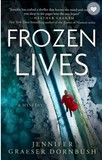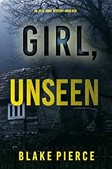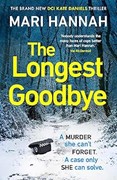The Rise of Self Published Books – 2024
Authors are choosing more often to self publish. A key indicator in 2024 trends is the uptick in self publishing which outstripped traditional publishing for the first time. This self publishing market is experiencing a 17% annual growth rate. Compare that to the 1% growth rate of the traditional publishing market.
Even The Pulitzer Prize and British Book Awards are now open to self published books. Sorry, The New York Times bestseller list still requires a traditional publishing process. But for us, the serious self publishing authors, this means there are far more opportunities for recognition.
I was initially dismayed by the amount of work in the more interactive process of book cover math, developmental and format editing and the sheer enormity of how to tackle social media marketing. Nonetheless, the upside of self publishing vs traditional publishing has definite advantages. For instance, self publishing is far faster and easier. Self published authors also score a much bigger chunk of the book royalties. According to the Alliance of Independent Authors, more than 2,000 authors earned over $100,000 in royalties in 2022 and the earnings continue to increase!
Corporate conglomerates are not the exclusive source of good storytelling and great reads. As we start another year of authoring and book marketing, I chose three self published selections to share with you and hope you’ll read at least one. They stood out from the long list of bestselling self published books 0f 2024.

by Jennifer Graeser Dornbush
Chicago surgeon Emily Hartford has never quite shaken off the dust of her hometown in Michigan. She may be a professional success and have a princely boyfriend in the Windy City, but she can’t seem to let go of being “the coroner’s daughter” from Freeport.
She finds herself pulled back to her hometown when Jeremiah–the eleven-year-old son of her best friend, Jo–goes missing on the frigid shores of Lake Michigan. Emily solidifies her role as the coroner’s daughter when she puzzles out a madman’s chilling machinations. Risking everything dear to her, Emily is determined to go the icy distance and end his killing spree.
My Take: This book was my favorite – good suspense and chilling insight into a maniacal criminal mind.

Girl, Unseen (An Ella Dark FBI Suspense ThrillerBook 23)
FBI Agent Ella Dark, 29, is given her big chance to achieve her life’s dream: to join the Behavioral Crimes Unit. Ella’s hidden obsession of gaining an encyclopedic knowledge of serial killers has led to her being singled out for her brilliant mind, and invited to join the big leagues.
Ella finds herself in a cat and mouse chase with no way out, and she must wonder if she is hunting–or the one who is hunted….
My Take: If you love the hairpin turns in a life-threatening crime chase, you are going to find it here! Girl Unseen is book #23 in a series by bestselling author Blake Pierce, whose book, Once Gone has received over 20,000 five-star reviews and ratings.

by Mari Hannah
The Longest Goodbye is the ninth in Hannah’s UK series featuring DCI Kate Daniels. Kate tackles a complex case while navigating an on-again, off-again relationship with criminal profiler Jo Soulsby. Three years prior, Kate investigated the murder of a police officer but the perpetrators were never brought to justice. Now, the suspects have been murdered. Seeking resolution will force Kate to confront her mistakes in the original investigation and put her career and her team’s lives on the line.
My Take: Nobody has better Crime Fiction than the Brits! Witness the popularity of Vera and Shetland – both stellar tv series. Mari Hannah’s work is now under development for UK television and streaming. You don’t want to miss this one.
Valerie Webster spent a career in law enforcement and national security technologies. She is the author of the Rita Mars Thriller series: Driven and Objects of Desire. Book three, The Book of Revelation is due out in the fall of 2025.
